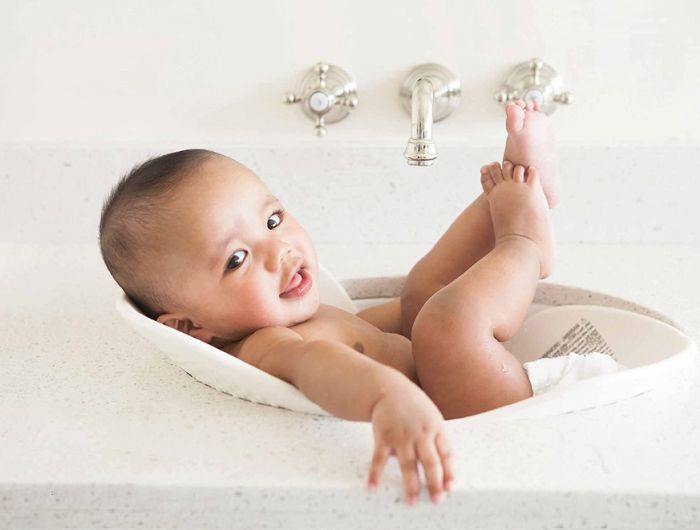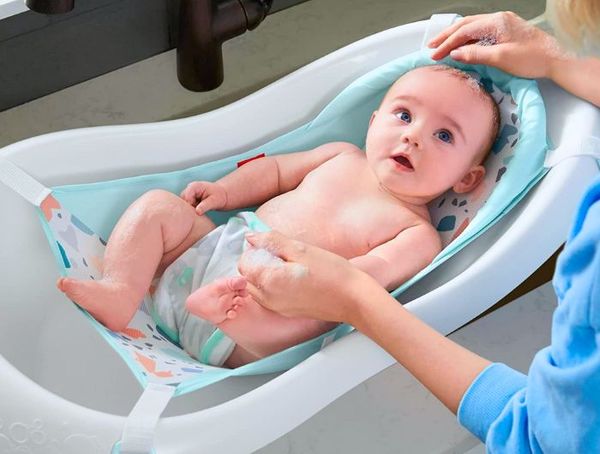Bathing a baby can be a daunting task, especially for new parents. However, with a little practice, it can become a relaxing bonding experience for both the baby and the caregiver. Here are some tips for giving your baby a bath that will leave your little one calm, clean, and relaxed.
Start with a Sponge Bath
Newborns have delicate skin that is prone to dryness and irritation, so it's important to be gentle with them during baby bath time. For the first few weeks, stick to sponge baths using a soft washcloth or a sponge.
To keep your baby warm during the bath, make sure that the room is comfortably warm, and use a warm water-filled basin to clean your baby's body. Start by washing your baby's face and then move to the rest of their body, leaving the umbilical cord stump untouched until it falls off on its own.
Use Baby Soap Sparingly
When it comes to newborns and soap, less is more. Using too much soap can dry out the baby's skin and cause irritation. Use just a pea-sized amount of mild baby soap on a soft washcloth to clean your baby's body, including the folds under their arms and legs. Gently clean your baby’s scalp with a soft brush or washcloth depending on if your baby has hair or not.
Introduce the Baby Bathtub
Once your baby's umbilical cord stump has fallen off, you can start introducing the baby bath tub. You may also opt for a bath seat to make it easier for you to wash your baby safely while keeping them in place. And if you haven't found the best baby bath tub yet, let us help you with that.
Fill the infant tub with just a few inches of warm water, making sure that the water is not too hot or too cold. Test the water with your elbow to make sure it's at the right temperature before placing your baby in the tub.
Choose the Right Time
You don't want to bathe your baby when they are hungry, tired or cranky, as this will make them more fussy and irritable. You also don't want to bathe them right after feeding, as this can cause them to spit up or vomit.
The best time to bathe your baby is when they are alert and calm, usually between feedings. Some parents prefer to bathe their baby in the morning, while others like to do it in the evening as part of their bedtime routine. Experiment with different times and see what works best for your baby.
And if you are wondering how often you should bathe your baby, read our next post.
Preparing for Bath Time
First off, you'll need a baby bathtub, sink, or plastic tub that fits in your regular bathtub or on a counter. If you're using a sink or bathtub, ensure it has a non-slip surface and is free of debris. For smaller babies, you may use a bath seat or infant tub.
Next, you'll require a soft towel with a hood. This towel is perfect for keeping your baby warm after the bath and drying their little bodies. You can also use soft muslin blankets as an alternative.
A sponge, washcloth, or cotton wool balls are necessary for gently washing your baby's body and face. It's important to select a washcloth or sponge that is soft, hypoallergenic, and fragrance-free. You'll need a pitcher or a cup for pouring water over your baby's body and hair without causing any discomfort.
When choosing infant soap and shampoo, consider mild, fragrance-free products that are specially designed for a baby's delicate skin.
A changing mat or pad is crucial for laying your baby before and after the bath. It provides a safe and comfortable surface for you to dry and dress your baby.
Don't forget to have a clean diaper and clothes available to dress your baby when the bath is over. Baby powder is optional, but it's great for preventing diaper rash and keeping your baby's skin dry. Finally, you can make bath time more engaging and fun for your baby by using bath toys.
Now that you have all the essentials gathered, let’s make sure everything is in order. Fill the tub or sink with about 2 inches (5 cm) of warm water around 100°F (38°C), adding a touch of warmth to ensure your baby's comfort. Check the temperature using your wrist or elbow to ensure that it is just right.
Avoid putting your baby in the tub while the water is still running, as this could change the depth or temperature of the water, which can be harmful to your baby's sensitive skin.
Give Your Baby a Tub Bath
Gently lower your baby into the water, holding them securely with one arm under their head and neck and the other under their bottom. Make sure their head is above the water at all times, and never leave them alone in the tub.
Some babies love being in the water, while others may cry or resist. If your baby seems scared or unhappy, try talking to them softly, singing a song, or distracting them with a toy. You can also try wrapping them in a towel and gradually unwrapping them as you lower them into the water.
Wash your baby from top to bottom, using a soft washcloth and a mild baby soap or shampoo. Start with their face, gently wiping their eyes, nose and mouth. Then move on to their hair, scalp and ears, using a small amount of soap or shampoo and rinsing well with clean water.
Next, wash their neck, chest and arms, paying attention to any folds or creases where dirt may accumulate. Then wash their belly button, genitals, and legs, being careful not to irritate their sensitive areas. Finally, wash their back and buttocks, lifting them slightly out of the water.
Dry your baby thoroughly with a clean and dry towel, patting their skin gently rather than rubbing it. Make sure you dry all the folds and creases of their body, especially under their chin, behind their ears, under their arms and between their legs.
Drying your baby well will prevent them from getting cold or developing rashes or infections. You can also apply a moisturizer or lotion to their skin if it is dry or irritated.
Dress your baby in clean clothes that are appropriate for the season and the temperature of your home. You can also put a hat on their head if it is wintertime.
Be Mindful of Baby's Body Heat
Babies lose heat rapidly, so it's important to keep them warm during baby bath time. Keep a warm, dry towel nearby and use it to cover the parts of the baby's body that are not being washed.
Also, Pay attention to your baby's body temperature and make sure they are properly dressed for the environment after bathtime.
Pay Attention to The Baby's Head, Hair, and Face
Make sure to pay attention to your baby's head, hair, and face. Use a soft washcloth to clean their face, making sure to be gentle around their eyes and nose.
You can use mild baby soap on the washcloth but again use sparingly. Gently wash your baby's hair using a baby shampoo and a soft brush or washcloth.
Conclusion
Giving your baby a bath doesn't have to be a stressful task. By following these tips, you can ensure that your baby's skin remains soft and clean, while also creating a relaxing bonding experience.
Remember, always be gentle when handling your baby, and as your baby grows continue to guide them through better bathing habits by introducing baby teething toys and other fun items to make bath time new and exciting.
Thank you for reading Mother Bear Reviews, your favorite parenting blog!





